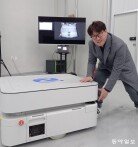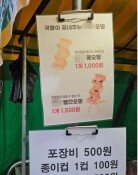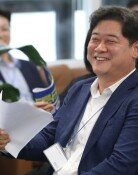Empire of Semiconductor in Tremble
"Even the semiconductor industry, a golden goose for South Korea`s export, is in red "
The status of Korea as the empire of the semiconductor is beginning to shake due to the burgeoning trade deficit.
The Korea Foreign Trade Association and the Korea Semiconductor Industry Association announced yesterday that, during the first two quarters of this year, the Korean industry sustained $1.7 billion in deficit, a figure double the amount sustained last year, or $850 million. This year`s figure is the record high in history. Previously for the same period in 2001, when South Korea suffered the worst trade deficit, it was $1.3 billion. Therefore, the trade deficit for the whole year will be the biggest throughout history.
More disturbing is the fact that the deficit is not temporary in nature. After making profit for the last time in 2000, South Korea has been on the losing side for the three consecutive years.
▽ Increasing trade deficit = Skyrocketing volume of imported non-D-RAM products has driven up the deficit. With the boost in export of mobile handsets and electronic goods, the demand is increasing for those products. Currently, South Korean companies account for only 10% of the total demand. Thus, increase in export of digital appliances leads to increase in import of the products.
In addition, the United States and the E.U. are trying to impose retaliatory tariffs on Hynix products, shrinking the industry further and putting more dents into export of D-RAM`s. The industry hopes that the price increase of D-RAM would boost the industry. But no signs are shown, indicating the increase of the export in the near future.
▽ Biased industry structure = Chang Tae-sung, analyst of Industrial Bank, assessed, "The whole industry is organized around D-RAM. It may hinder the development of the industry in the future." Now, the South Korean semiconductor manufacturers hinge everything on the price. But the price is not a controllable variable. Under this structure, it is hard to expect a stable development, and, therefore, the industry might lose in the process of heated global competition.
Another factor lies in the in-between status of the South Korean industry. The United States and Japan are ahead of it, while China and Taiwan are making inroads into the market with cheap price. Some industry experts vision a tough road and predict that the industry might end up failing to regain its old glory.
▽ Future on non-D-RAM products = Dataquest predicts that the semiconductor market for this year will amount to $167 billion. The D-RAM market accounts for only one eights of the market. Even South Korean companies begin to export more non-D-RAM products than D-RAM`s. Thus, the industry now feels the urgent need to boost the non-D-RAM sector.
One of the ways to boost the sagging industry is to develop the System on Chip (SoC) technology. The SoC combines into it the functions of the two types of semiconductor. Several countries like the United States, Japan, Sweden, Scotland, and Belgium have already dedicated themselves to the development of the relevant technology, and are waging a fierce competition.
Lim Young-mo, a chief researcher at Samsung Economics Research Institute says, "As a short-term strategy, Korean companies have to develop non-D-RAM products for products like handsets and appliances. But in the long run, the future will be determined by a new brand of chips like SoC."
Tae-Han Kim Ho-Won Choi freewill@donga.com bestiger@donga.com
Headline News
- Joint investigation headquarters asks Yoon to appear at the investigation office
- KDIC colonel: Cable ties and hoods to control NEC staff were prepared
- Results of real estate development diverged by accessibility to Gangnam
- New budget proposal reflecting Trump’s demand rejected
- Son Heung-min scores winning corner kick







